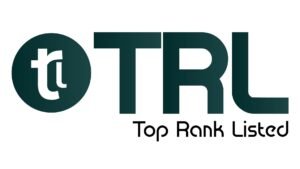Questions to Find the Best Applicant Tracking Software – I’ve spent over 10 years analyzing SaaS platforms and have tried many Applicant Tracking Systems (ATS) to see what really makes a tool work for HR teams. While many ATS solutions have great features and performance, I found that ease of use and customisation are often missing – especially for non technical HR people. Most tools have a steep learning curve which slows down adoption and reduces efficiency.
Through research including user feedback and company websites I realised that choosing the right ATS isn’t just about features – it’s about finding a solution that fits your team’s workflow and is easy to use. That’s why this blog answers the most common questions organisations have when selecting or upgrading their ATS.
Why Picking the Right ATS Truly Matters
Imagine this: your recruitment team has hundreds of candidates applying each month.
Interview schedules are dispersed among spreadsheets, resumes are accumulating in inboxes, and it seems impossible to reply to every applicant.
In such a hyper-competitive talent market, recruiters are faced with sifting through hundreds of resumes, juggling multiple stakeholders, coordinating interview cycles, and keeping track of compliance requirements all at the same time.
Doing all of this manually is just frustrating and inefficient. Enter the Applicant Tracking System. When chosen right, an ATS can reduce time-to-hire, streamline candidate experience, and provide your team with great data insight.
The downside: With more than 200 ATS offerings worldwide, how do you decide on the right one?
The answer lies in evaluation through pertinent questions.
In this Top Rank Listed blog, you will walk through 21+ vital questions you have to ask ATS vendors before signing the contract.
These aren’t “nice-optional” questions; rather, they mark the difference between wasting money on a tool and investing in a platform that will actually change how you hire.
What is an Applicant Tracking System (ATS)?
An Applicant Tracking System (ATS) refers to any such recruitment software that helps companies and staffing agencies to streamline their recruitment processes.
It handles job posting, resume screening, candidate communication, and coordination with hiring managers.
Consider this as your recruitment operating system:
- Candidates are sourced
- Resumes are stored and parsed
- Interviews are scheduled
- Emails are automated
- Analytics are reported
Today’s ATS aren’t just a filing cabinet for resumes. They’ve morphed into one-stop hiring ecosystems that integrate, at times, with HRIS systems, CRMs, job boards, and even AI tools for more intelligent recruitment and How To Write an ATS Resume.
Some examples of these include:
- RecruitCRM – favoured by recruitment agencies
- Greenhouse – strong in structured hiring
- Lever – popular for growing startups
- Workday – enterprise-focused solution
Why Do You Need One?
Recruiters and HR leaders often ask: “Why invest in an ATS when spreadsheets and email work just fine?”
Here’s why:
- Time Savings – Manual resume screening takes hours per role. An ATS automates filtering based on skills, education, or keywords.
- Collaboration – Hiring is not a one-man job. An ATS keeps recruiters, managers, and interviewers on the same page with shared dashboards.
- Improved Candidate Experience – Autoreponders, interview schedulers, and crystal-clear communication make the candidates feel acknowledged.
- Compliance – Regulations like GDPR and EEOC require strict data handling. A good ATS ensures safe, compliant processes.
- Analytics – Measure time-to-hire, source of hire, and recruiter productivity with just a click.
- Scalability – As you grow, hiring complexity grows too. An ATS scales with your team.
In short, without an ATS, you risk losing top talent to disorganized processes.
21+ Questions to Find the Best Applicant Tracking Software
So let’s deep-dive into the key questions you need to ask when evaluating an ATS and How ATS Works.
1. Can You Send Bulk Emails?
Why ask this?
When handling dozens or hundreds of applicants for a single job, emailing each one manually is a nightmarish process. A good ATS should provide bulk emailing with personalization tags (e.g., candidate names, job titles).
Example: Recruiters using RecruitCRM can send 100+ personalized emails with just one click while avoiding spam triggers.
Checklist:
- Does the ATS support email templates?
- Can you personalize at scale?
- Is there deliverability tracking (open rates/clicks)?
2. Does the Software Allow Email Scheduling?
Hiring requires timely communication. For example, sending an interview invite on a Friday might not get noticed until Monday.
Why It Matters:
ATS platforms with email scheduling let recruiters draft once and schedule communication for the most optimal times.
Example: Greenhouse allows recruiters to schedule interview reminders automatically.
Pro Tip: Ask if the ATS supports timezone-sensitive scheduling for global hiring.
3. Does it Allow Interview Scheduling?
Negotiating interview slots through tons of emails back and forth is the bane of recruiters everywhere.
A good ATS will give calendar (Google, Outlook) integrations and may allow candidates to self-book slots.
Example: Using Lever, candidates can select from a recruiter’s set of time slots, mitigating any timing conflicts.
Checklist:
- Can multiple interviewers be scheduled at once?
- Are reminders automated?
- Does it integrate with Zoom/Teams/Google Meet?
4. Does the System Help with Resume Parsing?
Resume parsing transforms candidate CVs into structured data such as skills, education, and job history.
Why It Matters:
Without parsing, recruiters waste hours manually reading and typing details into profiles.
Example: When an AI-powered ATS is utilized by a recruiter, they can import 500 resumes in minutes, with fields being auto-filled into candidate profiles.
Ask Vendors:
- What’s the parsing accuracy rate?
- Can it handle different formats (PDF, Docx)?
- Does it support multiple languages?
5. How Much Time Does the ATS Help Save?
A strong ATS should cut hiring cycles by 30–50%.
How to Evaluate:
Instead of vague promises, ask vendors for:
- Case studies
- ROI reports
- Data from existing clients in your industry
Pro Tip: Do a free trial and measure actual time savings in daily tasks like job posting, resume uploads, and interview coordination.
6. Does the Software Help with Recruitment Marketing?
Modern recruitment isn’t just filtering applications—it’s attracting top talent.
Your ATS should include:
- Branded career pages
- SEO-optimized job postings
- Social sharing integrations
- Talent community building
Example: RecruitCRM lets companies create branded job portals within minutes.
Why It Matters: Recruitment marketing = stronger employer brand = better quality applicants.
7. Does it Allow Updating Resumes and Candidate Profiles?
Candidates evolve. They update skills. They get certifications. If your ATS locks data once entered, it becomes outdated fast.
Checklist:
- Can candidates update their profiles themselves?
- Can recruiters refresh resumes with one click?
- Is version control maintained?
8. Can You Customize Your Job Boards?
Customizability ensures your career portal reflects your brand identity.
What to Look For:
- Custom job board themes
- Application forms with specific fields
- Multi-language support
Pro Tip: An ATS with customizable job boards gives a competitive edge in global hiring.
9. Does it Personalize Outreach Messages?
Candidates don’t respond to robotic templates. Outreach must be personalized at scale.
Example: Instead of “Dear Candidate,” the ATS should allow “Hi {FirstName}, we loved your background in {Skill}.”
Checklist:
- Does the ATS allow personalization tokens?
- Can you segment candidates for targeted messaging?
10. Does it Help with Client and Candidate Management?
For staffing firms, client management is as important as candidate management. Look for ATS platforms with CRM capabilities.
Example: RecruitCRM doubles as both an ATS + CRM, making it ideal for agencies.
Why It Matters: Saves agency recruiters from juggling multiple tools.
11. How Does the ATS Manage the Talent Pipeline?
A healthy talent pipeline is vital.
Evaluate:
- Does the ATS offer drag-and-drop pipeline visualizations?
- Can you set automated workflows at each stage?
- Does it flag inactive candidates?
12. Can You Make Searches Within the Database?
Recruiters often need to revisit old candidates. A strong ATS must allow keyword, skill, and advanced searches across the database.
Example: Boolean-powered searches give recruiters instant access to the right profile from years ago.
13. Can You Do Searches Within the Candidate Profiles?
Sometimes, critical details (like certifications or niche skills) are buried.
Pro Tip: Look for searchable candidate profile fields that even capture data from parsed resumes
14. Are Boolean Search and Radius Search Available?
Boolean = precision. Radius search = location-specific hiring.
Use Case:
A recruiter looking for a “Java Developer NOT PHP within 50 miles of New York” can instantly filter the right candidates.
15. Can You View Performance Reports and Analytics of Your Team?
Data is hiring’s superpower.
What to Measure:
- Time-to-hire
- Source of hire
- Candidate drop-off rates
- Recruiter efficiency
Ask if the ATS comes with visual dashboards and exportable reports.
16. How Often Are New Features Updated?
Recruitment changes fast. AI today, new compliance rules tomorrow.
Ask Vendors:
- How frequently do they roll out updates?
- Do clients pay extra for upgrades?
- Is feedback-driven development encouraged?
17. Does the System Meet Diversity Standards?
Bias-free hiring is now essential.
Look for features like:
- Anonymized candidate profiles (blind hiring)
- Structured interview templates
- DEI analytics
18. Are Chatbots Available?
Chatbots = candidate engagement 24/7.
Use Cases:
- Auto-filling FAQs (“When will I hear back?”)
- Scheduling interviews
- Recommending roles
19. How Does it Help with Candidate Engagement?
Candidate experience makes or breaks your employer brand.
Look For:
- Status update portals
- Automated follow-ups
- Candidate newsletters
Tip: Engaged candidates are 40% more likely to accept offers.
20. Does the System Come with a Chrome Extension?
This speeds up sourcing from platforms like LinkedIn, Indeed, and GitHub.
Example: RecruitCRM’s Chrome extension lets recruiters pull candidate information with one click.
21. Does the ATS Allow Integrations?
Does it play well with:
- Job boards (Indeed, LinkedIn)
- HR tools (BambooHR, ADP)
- Communication apps (Slack, Zoom)
- Assessment tools (Codility, HackerRank)
Pro Tip: Ask for an integration marketplace demo.
22. Can You Manage Your Invoices?
For agencies, invoicing is critical. A modern ATS should:
- Generate branded invoices
- Track payments from clients
- Automate reminders
Value Add: Eliminates the need for separate accounting tools.
Final Thoughts – Questions to Find the Best Applicant Tracking Software
Choosing an Applicant Tracking System (ATS) isn’t a quick decision—it’s a long-term investment. The right ATS will:
- Save time and money
- Improve collaboration
- Strengthen candidate engagement
- Provide actionable insights
But the wrong ATS? It’ll create chaos, frustrate your team, and waste your budget.
By asking these 21+ ATS evaluation questions, you’ll not just filter vendors—you’ll find a platform that becomes your strategic hiring partner.
Bottom Line: The goal isn’t just finding an ATS, it’s finding your ATS.




